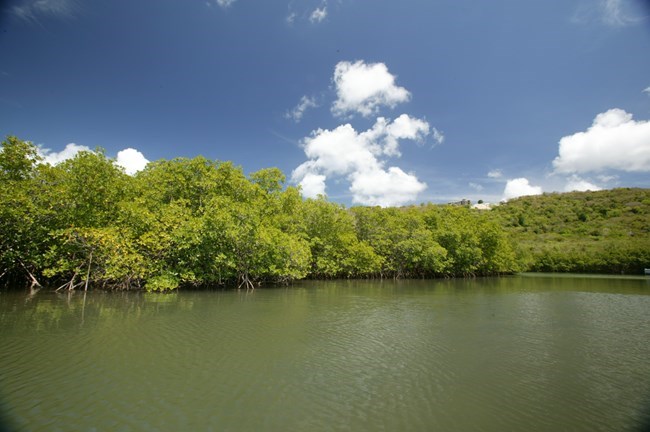
NPS Photo / Sean Coursaut
Overview
The Salt River Bay National Historical Park and Ecological Preserve's blend of sea and land holds some of the largest remaining mangrove forests in the Virgin Islands, as well as coral reefs and a submarine canyon. Salt River Bay’s natural history, its vitally important ecosystem of mangroves, estuary, coral reefs, and submarine canyon, has witnessed thousands of years of human endeavor.The Salt River Bay National Historical Park and Ecological Preserve Vegetation Inventory Project delivers many geospatial and vegetation data products, including an in-depth project report discussing methods and results, which include descriptions to vegetation associations, field keys to vegetation associations, map classification, and map-class descriptions. The suite of products also includes a database of vegetation plots, and accuracy assessment (AA) sites; digital images of field sites; digital aerial imagery; digital maps; a contingency table listing AA results; and a geodatabase of vegetation, field sites (vegetation plots, and AA sites), aerial imagery, project boundary, and metadata.
Products
The products of vegetation mapping projects are stored and managed in the National Park Service's Data Store, a repository for documents and publications relating to park resources. From the highlighted items below, click on the type of information you are looking for.
Last updated: October 19, 2018
